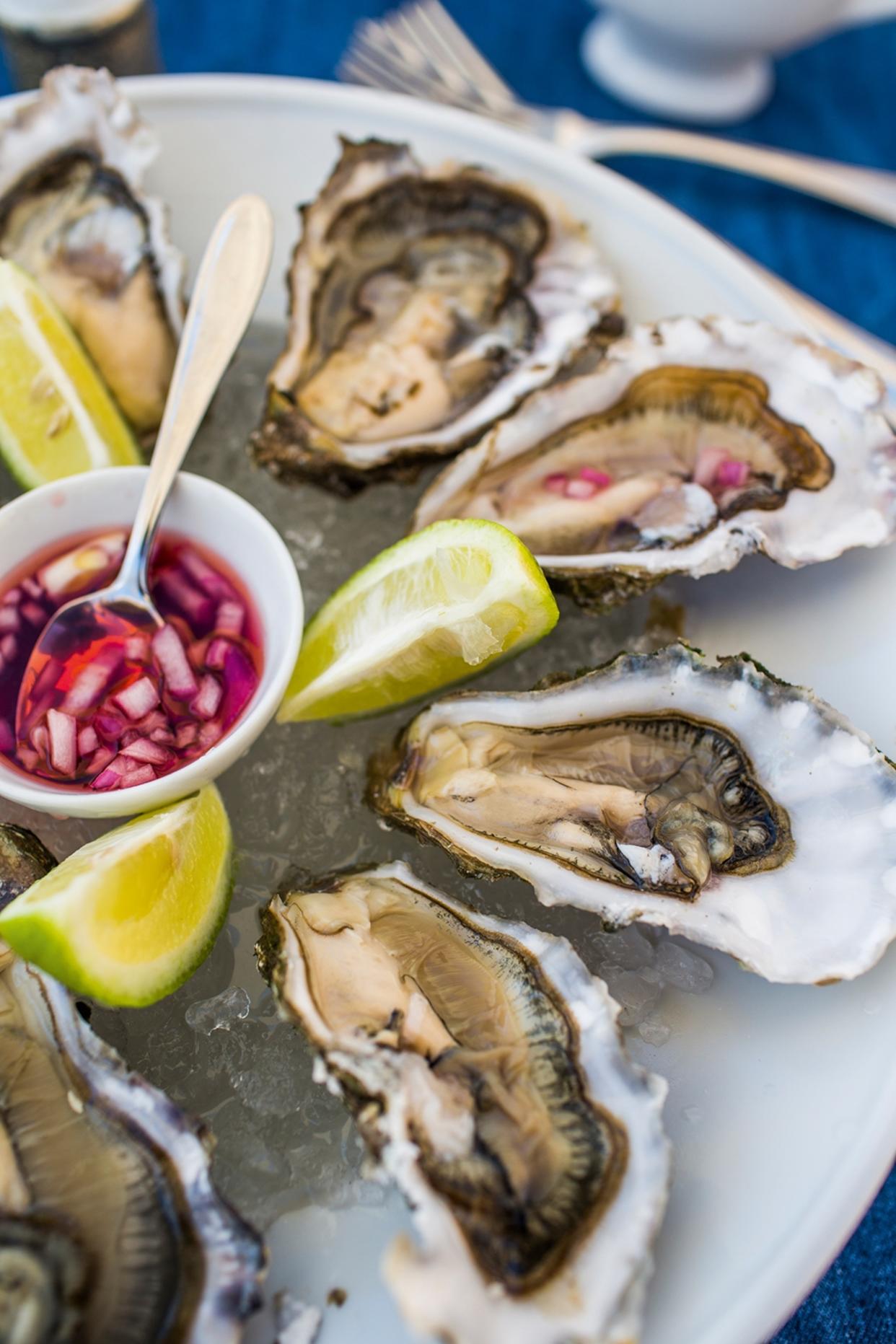
This article was produced by National Geographic Traveller (UK).
“Des huîtres? Des huîtres?” The tanned salesman calling to me in French is holding a knife in one hand and a gnarled oyster in the other, beckoning me over for a taste. It’s a breezy June day and I’m at a row of whitewashed shacks by the beachside corniche in Oualidia, a town on Morocco’s Atlantic coast. Each is topped by a Majorelle-blue canopy shading its display of huîtres (oysters), giant sea snails, cockles and clams, all arranged within borders of fat lemons and small bottles of Tabasco sauce.
Unbeknown to many, Morocco has a blossoming oyster industry — and the community of Oualidia, on the west coast, is very proud of its premier export. The town is a warren of sleepy streets flowing down to seafood cafes and a beachside surf shack that hires out boards. But what makes it special is the tidal lagoon where the molluscs in front of me will have been plucked that morning. I can see it beyond the beach, stretching northwards, sea fret hanging over the water. Protected from the Atlantic waves by a sand bank that hides the sea, the wetland reserve is home to seven oyster farms, plus thousands of birds. Its waters are so valuable that it’s recognised as a site of international importance by the intergovernmental Ramsar Convention on Wetlands.
“There are two famous places for oysters in Morocco: Dakhla and Oualidia,” explains my guide, Nabil El Bahri, when we motor out in a small boat to get a closer look the next day. “The ones in Oualidia are more delicious, and great to eat straight from the water,” he adds. Nabil, dressed head-to-toe in khaki like a pro twitcher, knows what he’s talking about — before working here, he regularly came on childhood holidays to visit his grandmother.


Although few international travellers make it to Oualidia, around 120 miles north of Essaouira, it has a long history as a summer destination for Moroccans. As we sail past spears of wood protruding from the lagoon — each one marking the location of an underwater oyster bed — I’m keeping one eye on an entertaining flotilla of brightly decorated boats ferrying kids and women in hijabs over to a long beach on the coastal side of the lagoon. Pedalos and kayaks pass us, some with waving children. Smoke from makeshift grills on the sand dissipates into the sea air; the atmosphere is jubilant.
Sailing further, the beach goers thin out, replaced by simple white buildings used for cleaning the oysters, and neat rows of traps forming fishy fences at the front of each property. Some have tables and chairs outside to tempt water-borne visitors in for shucking marathons.
I soon realise we’re not the only ones checking out the glassy lagoon’s natural larder. As we move into its upper reaches, we see a grey heron and spoonbills wading in a reed bed, low-flying terns and coots whose feet slap against the water as they take off. “The temperature of the water and food is good for the birds. There are worms, fish and shrimp for them,” explains Nabil, as we pull up with a bump to clamber ashore. Having travelled about six miles to the furthest reaches of the lagoon, Nabil is on a mission to find us Oualidia’s most colourful inhabitants: flamingos.
Passing fields of wheat and corn, we pick out a narrow path through a springy carpet of samphire and magenta-coloured sea grasses to cross a series of abandoned salt pans. And there they are: a single-file procession of tall, bubble-gum pink bodies in the shallows.
As we watch them stalk through the reeds, Nabil explains Oualidia is a favoured hangout for the birds on their journey from Spain to Senegal. “We know this because they’re all tagged — we log the numbers when we see them.” He’s full of facts; my favourite being that flamingos’ trademark rosy hue is down to their preferred diet of shrimps. Eyes glued to binoculars, Nabil pauses to check on them. “They’re in good health. Their colour is just fantastic,” he whispers.
The next morning, over breakfast at the lagoon-side La Sultana Oualidia hotel, I see another leggy resident wading through the waters — a local clam collector taking advantage of the low tide. They’re in good company, with snowy white egrets digging among the collage of seaweed-draped rock pools. I’m eager for one more glide as soon as the tide allows, but this time I opt for the hotel’s kayak.


With the absence of a boat’s motor, there’s nothing to drown out the roar of the sea — ever present, but invisible from lagoon level. Drawn to the fierce sound, I pull up on the beach opposite the hotel, clambering past discarded oyster shells from yesterday’s picnics up to a pockmarked, rocky plateau to find it. The waves below are huge; frothy and angry-looking, a direct contrast to the lagoon behind me, which has bubbled into a handful of tranquil islands with the receding waters — a haven for oysters, farmers, birds and anyone lucky enough to find this place.
Published in the October 2024 issue of National Geographic Traveller (UK).
To subscribe to National Geographic Traveller (UK) magazine click here. (Available in select countries only).







